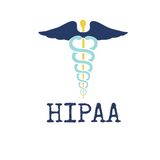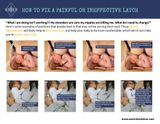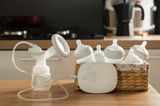Typically, occasional, short-term use of an oral or topical antifungal for thrush causes no problems. Still, there may be cases where avoiding antifungal medication is ideal. Frequent usage of antifungals can lead to Candida -the fungus that causes thrush-developing resistance. Antifungal resistance is an acute concern for those who regularly get vaginal or oral yeast infections, as they are more likely to suffer from nipple thrush. You may be looking to avoid medication due to resistance concerns, underlying health issues, or a general desire for a natural approach.
You're dealing with nipple pain and looking for information on natural home remedies for treating thrush. Luckily, managing & resolving nipple thrush without a prescription antifungal is often possible.
Whatever the reason, you will find the essential information you need to know about treating thrush at home.
Will a natural remedy work for nipple thrush?
In most cases, you can treat mild to moderate thrush infections at home. You should see an improvement in nipple /breast pain within 5-7 days of starting the natural remedies.
With more severe cases of thrush, you may need to be treated with a prescription antifungal. Though the risk is very low, Candida can enter the bloodstream and cause a life-threatening illness in rare cases.
A general rule for any natural remedy plan is to monitor your symptoms closely & seek medical care if the symptoms get worse or your symptoms don't begin to improve within a week.
One of the significant challenges with managing thrush is appropriately identifying it. In the past, Doctors & Lactation Consultants would determine thrush to be an issue in cases where there was any nipple discomfort or burning pain in the breast/chest accompanied by redness, shininess, or flaking of the areola skin.
More evidence is emerging that the symptoms we associated with thrush often occur when there is an overgrowth of bacteria on the nipple/areola. Everybody has good & potentially bad bacteria that naturally live on the skin, but when the problematic microbes overtake the good bacteria, problems can arise. So rather than thrush, these symptoms coincide with Mammary Dysbiosis, the scientific name for "bacterial overgrowth of the nipple/breast."
The best way to manage mammary dysbiosis is to restore a healthy balance of skin microorganisms.
Other causes of nipple pain or "thrush symptoms" that are not due to an overgrowth of yeast include:
- Vasospasms
- Tongue-tie
- Poor latch
- Dermatitis
- Allergy
If any of the above is the cause of your nipple pain or redness, the below home remedies will not be effective, and your discomfort may persist.
And with the prevalence of misdiagnosis of thrush & missed tongue tie/latching issues, of all the options for the cause of your nipple pain, Thrush is the least likely.
How do natural remedies treat nipple thrush?
There are two ways to get rid of a thrush infection; killing the fungal cell and/or preventing the fungal cell from growing & reproducing. In both cases, the aim is to restore a balance to the Candida population, resulting in the resolution of symptoms.
The most commonly prescribed thrush treatments in the US, Fluconazole & Nystatin, work by killing the Candida cell.
On the other hand, natural remedies mainly focus on preventing the fungal cells from growing & reproducing by creating a suboptimal environment for Candida and by boosting the immune system to keep the Candida colonies on the body in check. Most of the below home remedies will focus on things that strengthen immune health.
8 home remedies for getting rid of nipple thrush
Wash your nipples once a day with warm, soapy water
Rarely does thrush occur without an accompanying bacterial overgrowth, so washing your nipples once a day with warm soapy water can help manage or reduce the population of microbes.
Use a fragrant-free, alcohol-free mild soap; You don't need to use soap marketed as antibacterial, as regular soaps are already antimicrobial.
Soak nipples in baking soda bath 3–4 times a day
Baking Soda (Sodium Bicarbonate) is effective against Candida Albicans, the leading species of thrush infections. Candida can grow in many different environments, though it thrives in an acidic environment. Naturally, your skin is mildly-acidic (ph of 5.5), but environmental factors can cause disruptions in PH levels, making thrush more likely. Baking soda washes, applied to your nipples, can change the skin's pH, reducing the rate of cellular growth & reproduction. Direct application of baking soda onto yeast can kill it, so it attacks thrush from two different angles.
Mix 1 teaspoon of baking soda and 1 cup of warm water and submerge your nipple & areola in the mixture for 1-2 minutes. Alternatively, you can gently apply the solution onto your nipple & areola using a cotton swab.
Apply medihoney after each feeding
Medihoney aims to address the overgrowth of yeast by addressing the co-occurring bacterial overgrowth. Certain strains of honey have antifungal properties and effectively reduce Candida Albicans populations, however, due to botulism concerns, it is not recommended to use honey on anything that will go into a baby's mouth.
Medihoney is a medical-grade honey product that has been treated to remove all risks of botulism, thereby making it safe for nipple application. While Medihoney has some antifungal properties, the main benefit is that it helps restore the balance of the flora on the nipple. Medihoney alone is likely to be insufficient at treating thrush.
Coconut oil or olive oil are great alternatives to Medihoney that most already have on hand, serving the same purpose. Neither Medihoney, coconut oil, or olive oil needs to be washed off before feeding your baby.
Increase intake of fermented foods, leafy greens, & garlic
High-quality fermented foods are integral to managing all types of yeast, including nipple thrush. Fermented foods are rich in probiotics, which help restore gut health and strengthen the immune system. Even though we all have Candida all over our body, when our immune system is compromised, or our gut flora is disrupted (such as after antibiotics usage), thrush becomes an issue.
Finding high-quality fermented foods at your local grocery store is relatively easy, as most leading grocery stores carry the most common types: Kombucha, Sauerkraut, Kefir, & Kimchi. Many stores also have fermented pickles and tempeh, which can be great additions to one's regular diet.
Below you will find information on what to look for in high-quality products and the best brands you're likely to run into at your local grocery store.
- Kombucha: Look for raw, unfiltered kombucha. The top brands are GT Synergy, Humm, Brew Dr., & Healthaid.
- Sauerkraut: Avoid sauerkraut that has been pasteurized, cooked, or that has vinegar. Wildbrine, Cleveland Kraut, and Silver Floss have the most probiotics.
- Kefir: Lifeway is the most accessible high-quality kefir brand to find. Other brands include Maple Hill, KeVita, Redwood Hill Farm & GreenValley Creamery. Avoid Activa & Chiaboni, which are common but lower quality options. Kefir is nearly lactose-free, so it shouldn't be an issue if you're lactose intolerant, but if you want a water-based option, stick with KeVIta probiotic drink.
- Kimchi: Avoid Kimchi that has been heat-treated. Top brands include Mother in Law's Kimchi, Lucky Foods Kimchi & Wildbrine. Wildbrine is completely fish-free, so it's a safe option if you have a shellfish allergy.
- Pickles: Avoid pickles brined in vinegar. Look for lactic acid fermented pickles such as Bubbies pickles.
Another option for meeting your probiotic needs is to take a probiotic supplement. There are many choices, and choosing the right probiotic can be challenging. When choosing a probiotic product, look for one that has at least 1 billion colony-forming units and choose probiotics with Lactobacillus or Bifidobacterium strains.
One downside to probiotic supplements is that many do not have the strain diversity needed to restore gut flora & boost the immune system adequately. Having more of one strain is good; having more of many strains is best- a benefit of eating fermented food, when possible, vs. taking a supplement.
Leafy greens are high in folate, vitamin C, vitamin K, vitamin A, and Sulfoquinovose, which boosts your immune system and helps healthy gut flora grow.
Eating garlic as part of your regular diet, and pumping up intake when you have thrush, can help your body overcome the Candida overgrowth and reduce the likelihood it becomes an issue in the future. Raw garlic is much more effective than cooked, so things like hummus, pesto, and soup with some raw garlic pressed on top of it can be the most beneficial.
Reduce sugary & carb-rich foods
Eating a lot of sugary or carb-rich food can disrupt your body's balance of good and bad bacteria and decrease the immune system. While battling thrush, reducing sugar & carb-rich foods can help make your other treatments more effective.
Please remember that making milk takes a lot of calories, when reducing foods in your diet make sure you are still well nourished. While most will recommend at least 500 extra calories/day while lactating. I have seen many people need more to maintain their health, especially in the early weeks and months.
Take Biotin Daily
Biotin deficiency can increase the risk of Candida overgrowth and may be a contributing factor to developing nipple thrush.
Many people have mild biotin deficiency during pregnancy. Antibiotic usage is a common cause of thrush, and it's also can interfere with biotin metabolism or uptake. Other medications, such as antiepileptics and isotretinoin, GI illnesses/diseases like IBD, & smoking can impact biotin levels leading to biotin deficiency.
Taking Biotin every day can ensure your biotin levels are sufficient for your immune system to work properly. The adult daily intake recommendation for Biotin is 30-100 mcg, much of which you can get by increasing egg yolks, legumes, nuts, and vegetables in your diet. I typically suggest my clients take 16 mcg of Biotin daily, split over two doses. Biotin is water-soluble; if you don't need the extra Biotin, you will pee out the excess.
Sterilize pump parts, bras, towels, & clothing
Yeast thrives in warm, damp environments. Tight clothing (such as bras) and moisture (as with leaking milk) can lead to colonies of thrush growing on everyday items. Anything that comes into contact with your nipples, including towels, should be sterilized daily.
You can sterilize towels, clothing, and reusable breast in the washer by adding 1 cup of white vinegar to the rinse cycle. It can be helpful to switch to disposable breast pads until the thrush resolves.
Wash your flanges or nipple shield after every use and sterilize them at least once a day by boiling for at least 10 minutes to kill off any thrush spores.
Do I have to stop breastfeeding/chestfeeding if I have nipple thrush?
You can (and should!) continue nursing your baby if you develop nipple thrush. Your baby's risk of developing oral thrush is very low, even if you currently have an active thrush infection on your nipples. By nursing, they may receive a bit more Candida cells in their mouth than they would have naturally (everyone has Candida in their mouths and all over their body), but typically babies have a robust enough immune system to fend off a thrush overgrowth.
When thrush is confirmed, it's sometimes recommended to treat both parent and baby simultaneously if both are showing symptoms. Doing so further decreases the risks of spreading thrush back and forth and helps minimize exposure to higher populations of Candida while trying to manage it. Luckily, there are a couple of Natural Oral Thrush Remedies you can use with your baby as well!
If want professional guidance to help resolve your nipple pain and ensure it does not return, you can schedule a visit. Managing nipple pain and discomfort can be done via telehealth, or if you are near the San Francisco– Oakland Bay Area, I'd love to see you in our clinic!
[Note: The links provided are affiliate links. Making a purchase through these links will provide a small commission to support the blog without any additional cost to you. We appreciate your trust and support!]





